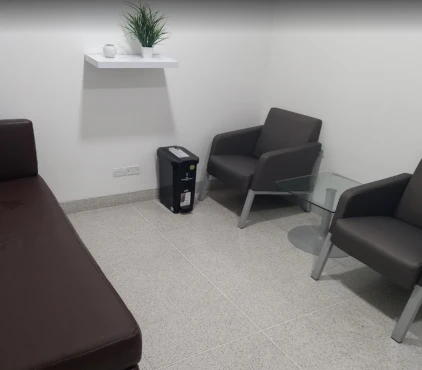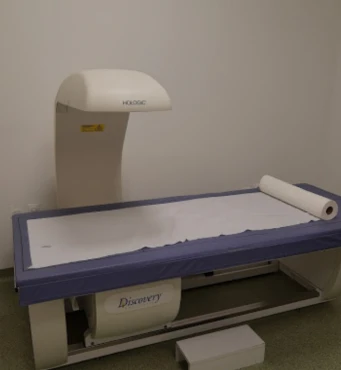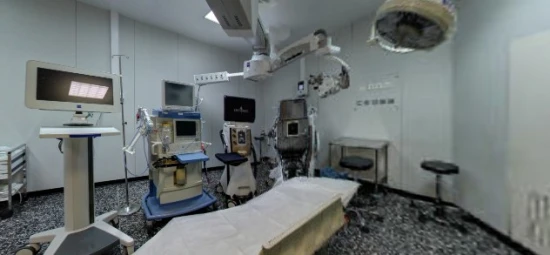Disease Types
What is the peritoneal cancer?
Peritoneal cancer is a rare but aggressive form of cancer that originates in the peritoneum, the thin layer of tissue lining the abdomen. This type of cancer is closely related to and shares many similarities with ovarian cancer. There are two primary forms of peritoneal cancer: primary peritoneal carcinoma (PPC) and secondary peritoneal cancer. PPC arises directly from the peritoneum, while secondary peritoneal cancer results from the spread of cancer from other organs, such as the ovaries, stomach, or colon, to the peritoneal lining.
PPC is most commonly observed in older women, particularly those over 60. Due to the close resemblance between PPC and ovarian cancer, the exact incidence of PPC is challenging to determine. Still, estimates suggest that around 10-15% of ovarian cancers may be primary peritoneal carcinoma. The prognosis for peritoneal cancer is generally poor, with five-year survival rates ranging from 20% to 30%, mainly due to the aggressive nature of the disease and the fact that it is often diagnosed at an advanced stage [NUCIS, 2021].
Causes & Risk Factors
What is the primary issue of peritoneal cancer?
While the precise cause of peritoneal cancer remains elusive, several well-established risk factors have been identified. These include:
- Genetic Predisposition: Mutations in the BRCA1 and BRCA2 genes, which are also associated with ovarian and breast cancer, can increase the likelihood of developing primary peritoneal cancer.
- Family History: Having a family member with ovarian, breast, or peritoneal cancer significantly raises the risk.
- Age: The risk of peritoneal cancer rises with age, especially in women aged 60 and above.
- Hormonal Factors: Postmenopausal women and those who have never been pregnant face a higher risk of developing peritoneal cancer.
Interestingly, even women with BRCA mutations who have undergone preventive oophorectomy (ovary removal) remain at risk for peritoneal cancer, as the peritoneum itself can still be susceptible to malignancy.
Clinical Manifestation & Symptoms
What signs should one anticipate while suspecting peritoneal cancer?
The symptoms of peritoneal cancer can be pretty vague and easily mistaken for other abdominal issues, often leading to delayed diagnoses. Patients may experience a range of common symptoms, including abdominal pain or discomfort due to fluid accumulation in the abdomen. Bloating or swelling can occur as a result of ascites or the growth of tumors. Changes in bowel habits, such as constipation or diarrhea, are also frequently reported. Unexplained weight loss, especially when accompanied by a loss of appetite, is another concerning sign. Additionally, nausea and vomiting may arise from the pressure that tumors exert on the stomach and intestines.
Unfortunately, these symptoms are not specific to peritoneal cancer and can develop gradually, making it challenging to recognize the condition early on. As a result, peritoneal cancer is often diagnosed at a later stage when the disease has already spread extensively throughout the body, making it more challenging to treat effectively.
Diagnostic Route
When, where, and how should peritoneal cancer be detected?
The diagnosis of peritoneal cancer involves a multifaceted approach. First, medical professionals utilize various imaging techniques, such as ultrasound, CT scans, and MRI, to detect abnormalities in the abdomen and assess the extent of the disease. These imaging studies provide valuable insights into the patient's condition.
Next, laboratory tests play a crucial role in the diagnostic process. Measuring the levels of a tumor marker called CA-125 can help support the diagnosis, as this marker is often elevated in ovarian and peritoneal cancers. However, it is essential to note that this test is not definitive and must be interpreted alongside other clinical findings.
Additionally, a procedure called paracentesis may be performed. This involves the removal of ascitic fluid, which is the accumulation of fluid in the abdomen. Analyzing this fluid can sometimes reveal the presence of cancer cells, further aiding the diagnosis.
In some cases, a biopsy may be necessary to confirm the diagnosis. This procedure involves removing a small tissue sample from the affected area and examining it under a microscope. This step provides a definitive diagnosis and is often considered the gold standard for confirming the presence of peritoneal cancer.
Finally, in certain situations, cytoreductive surgery may be performed. This surgery aims to remove as much of the tumor mass as possible before initiating other treatments, serving both diagnostic and therapeutic purposes. By understanding the comprehensive diagnostic approach, healthcare providers can make informed decisions and develop personalized treatment plans for patients with peritoneal cancer [Adamina et al., 2022].
Treatment Approaches
What are the options for managing peritoneal cancer?
Peritoneal cancer is typically treated through a combination of surgery and chemotherapy. The specific approach depends on factors like the stage of the disease, the patient's overall health, and any genetic mutations present [Cancer.gov, 2024; NIH, 2024].
Surgery. The primary goal is to remove as much of the tumor as possible. In advanced cases, cytoreductive surgery is performed to reduce the tumor burden. Studies have shown that the extent of tumor removal is crucial for improving survival.
Chemotherapy. Patients often receive intravenous or intraperitoneal chemotherapy after surgery. Common drugs used include paclitaxel and carboplatin. Hyperthermic intraperitoneal chemotherapy, which involves administering heated chemotherapy directly into the abdomen, has demonstrated promise in improving outcomes by targeting residual microscopic cancer cells. HIPEC can achieve response rates up to 60%, but it also carries significant side effects.
Targeted therapy. For patients with BRCA mutations, PARP inhibitors like olaparib have been effective, particularly in maintenance therapy following initial treatment. These drugs work by disrupting the DNA repair mechanisms in cancer cells, leading to cell death. Clinical trials have shown that olaparib can improve progression-free survival by up to 70% in BRCA-mutated peritoneal cancers.
Radiation therapy. Although not commonly used as the primary treatment, radiation therapy may be employed to alleviate symptoms or control tumor growth in 10-15% of cases.
Prognosis & Follow-up
How does cutting-edge science improve the lifespan and quality of life for those with peritoneal cancer?
The prognosis for peritoneal cancer is generally unfavorable, with five-year survival rates ranging between 20% and 30%, depending on the stage of the disease and the effectiveness of the treatment. However, early detection and aggressive treatment can enhance the chances of better outcomes, although many patients are diagnosed at advanced stages.
Regular follow-up is crucial to monitor for any recurrence of the disease. This typically involves periodic imaging, CA-125 level monitoring, and physical examinations every three to six months for the first two years, followed by annual check-ups afterward. Prompt detection of recurrence can enable timely intervention and potentially improve outcomes.
Although cutting-edge treatments like HIPEC and targeted therapies have helped improve survival rates, the overall prognosis for peritoneal cancer remains challenging due to the aggressive nature of the disease.



































































































